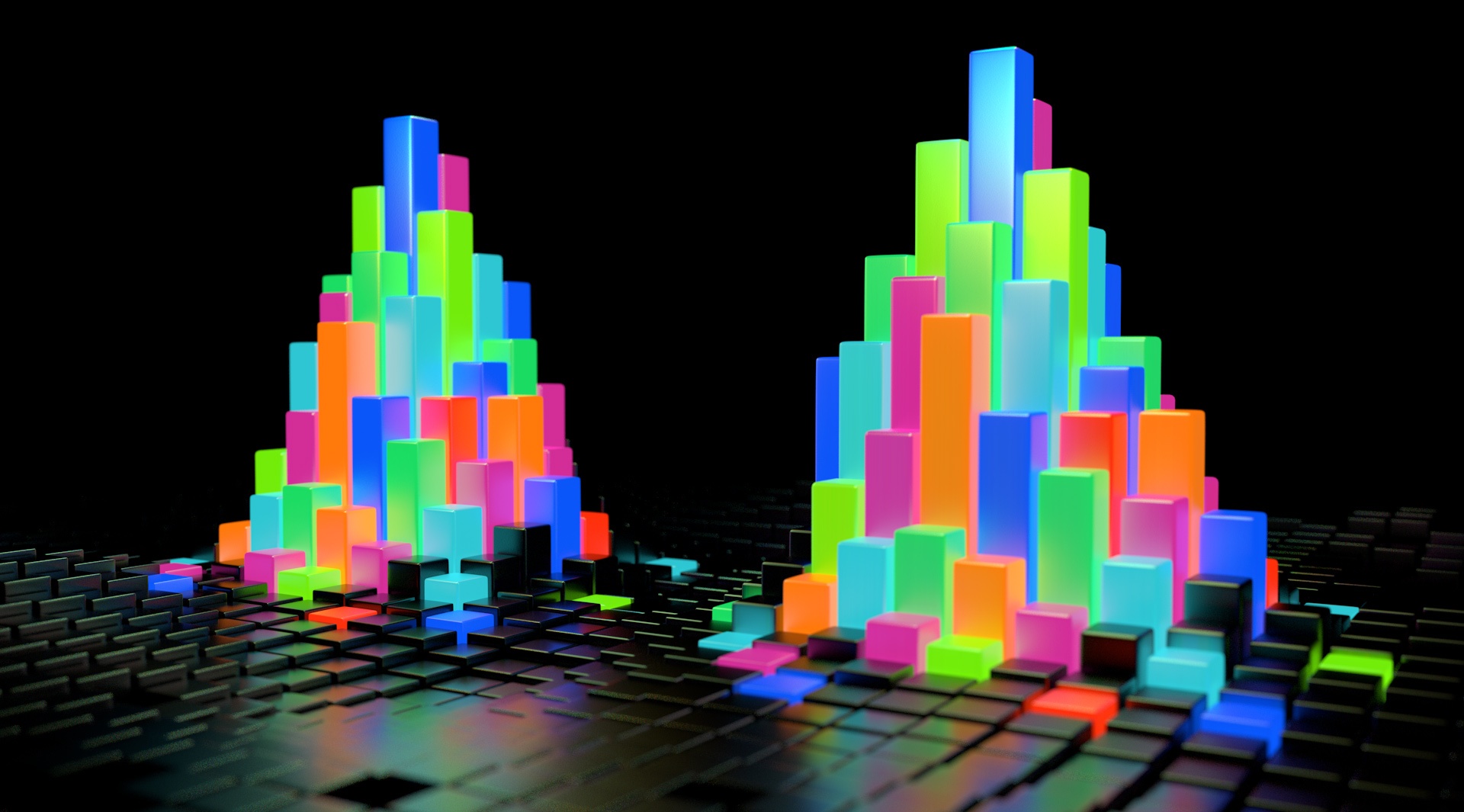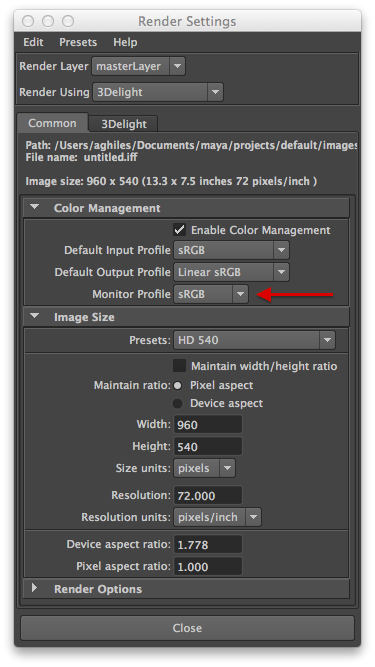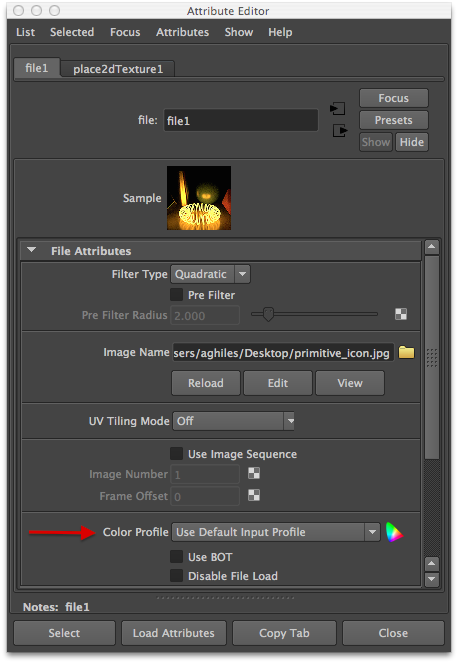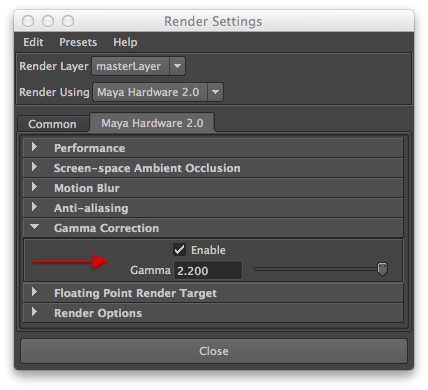In this test scene, the colors on the left object are picked using Maya's color swatch and the right colours are projected using a texture. Thanks to color management, the colours match perfectly even though the colours came from different sources. You can download the example scene here.
3Delight for Maya provides a complete linear workflow pipeline. This pipeline is unique in that is allows for a predictable behaviour across all visual elements:
- Automatic conversion of HydperShade color swatches. No need to insert any additional nodes (such as Maya gamma nodes) to put the swatch in the correct color profile.
- Automatically recognizes what is supposed to be color corrected and what is not. For example, 3Delight for Maya automatically uses linear color space for bump/normal and displacement maps.
- Total consistency between the viewport, color swatches, frame buffer (
i-display) and shader preview.
Enabling Color Management
To enable color management, simply enable Color Management in the Common tab of the Render Settings. The standard Maya settings are supported:
Default Input Profile
Specification of the default color space for input textures. You should choose an appropriate profile based on the color profile used in the majority of your input textures. For any texture which is not following this rule you should override the collar profile on a case by case basis, in the Maya File Texture node color profile settings.
Default Output Profile
Specification of the default color space for output images.
In addition to these two parameters, 3Delight for Maya lets you specify another very important color space:
Monitor Profile
Specifies the color space of the monitor on which lighting or surfacing work is performed. Having the correct profile of your monitor is a useful (even necessary) additional control. In fact, by knowing the color profile of your monitor 3Delight for Maya can automatically apply the necessary corrections to the color swatches of Attribute Editor.
Monitor Profile attribute is added when 3Delight is selected as the render engine.
Note that it is not possible to use the Default Input Profile as the monitor color profile because that attribute is used for textures. Textures are usually created in sRGB space but some monitors are calibrated for REC.709. Lighters working on such monitors can just switch the Monitor Profile to REC.709 and everything is set automatically.
Color Management in the File Node
Most texture files are created in software such as Photoshop or 3D paint softwares. This means that the most probable color space for these textures is sRGB. The most convenient way of setting the color space for textures is to set the global Default Input Profile to sRGB and to set the Color Profile attribute of the File node to "Use Default Input Profile". Assuming the majority of your textures are in sRGB color profile and you have enabled color management and chosen such compatible settings for your input textures, you still need to be careful as you might have a minority of textures of a different collar profile. For any texture which is not following the majority rule you should override the collar profile on a case by case basis, in the Maya File Texture node color profile settings. A good example is the textures used as environment which is typically of linear rcolro profile (in HDR or EXR format): if your input color profile is of hype sRGB and you are using an HDRI image (HDR, EXR, TIF32) you should make sure to override its color profile to "linear".
Color Profile selection in the File Node
Color Management in the Viewport
In Maya 2015 it is possible to have a better color balance in the viewport by setting the Gamma of the Viewport 2.0 to 2.2.
Setting the gamma to 2.2 is a poor approximation to an sRGB profile. That is why it is incorrect to say that Maya has color management in the viewport. None the less, it is better to use a gamma of 2.2 rather than using a linear profile (with no gamma correction).
To set the gamma, select Viewport 2.0 and enable gamma correction in the Hardware Renderer 2.0 Settings, as show below.
Enable Viewport 2.0
Enable gamma correction and set Gamma to 2.2
Color Management in the Attribute Editor
To be continued...




